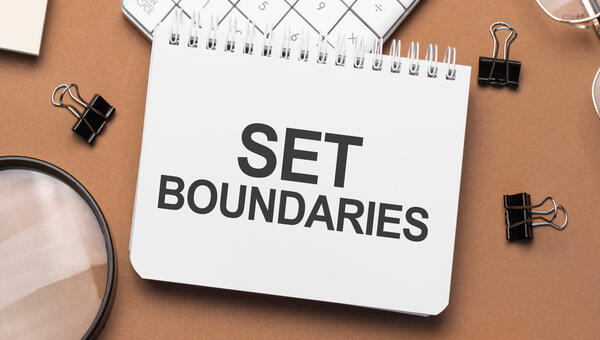How to Develop Healthy Boundaries for Emotional Well-Being

Healthy emotional boundaries are essential for maintaining emotional well-being and fostering healthy relationships with others. Boundaries help us define and protect our emotional space, allowing us to manage our emotions and responses in a balanced and constructive manner. In this blog, we will explore the importance of emotional boundaries, understand the signs of weak boundaries, and provide practical strategies to develop and maintain healthy boundaries for enhanced emotional well-being.
I. The Significance of Emotional Boundaries
A. Defining Emotional Boundaries
Emotional boundaries are invisible lines that separate our emotions, thoughts and needs from those of others. They help us understand where we end, and others begin, fostering a sense of self-identity and personal autonomy.
B. Enhancing Emotional Regulation
Healthy emotional boundaries enable us to manage our emotions effectively and respond to situations in a way that aligns with our values and well-being.
C. Fostering Resilient Relationships
Emotional boundaries play a crucial role in forming and sustaining healthy relationships, as they allow for open communication and respect for each other’s emotional space.
II. Recognizing Signs of Weak Emotional Boundaries
A. Over-Emotional Responsiveness
Having weak emotional boundaries can lead to being overly sensitive or reactive to others’ emotions, resulting in emotional exhaustion.
B. Difficulty Saying No
Struggling to say no to others’ requests or demands can be a sign of weak emotional boundaries, as it indicates difficulty in setting limits.
C. Feeling Overwhelmed by Others’ Emotions
Feeling responsible for managing others’ emotions or taking on their emotional burdens is indicative of weak emotional boundaries.
Read More : How to Build Healthy Habits for Lifelong Wellness
III. Strategies to Develop Healthy Emotional Boundaries
A. Self-Awareness and Reflection
Take time for self-reflection to understand your emotions, needs, and values. This awareness lays the foundation for setting healthy boundaries.
B. Communicate Your Boundaries Clearly
Be assertive in communicating your emotional boundaries to others. Use “I” statements to express your needs and limits respectfully.
C. Practice Saying No
Learn to say no to requests that go against your boundaries. Saying no does not make you selfish; it is an act of self-care and preservation.
D. Establish Boundaries Gradually
Setting boundaries is a process. Start by establishing boundaries in less challenging situations, then gradually apply them to more significant areas of your life.
E. Be Prepared for Resistance
Others may not immediately accept your boundaries. Stay firm and consistent in upholding them, even if there is initial resistance.
IV. Nurturing Emotional Well-Being Through Healthy Boundaries
A. Prioritize Self-Care
Set aside time for self-care activities that nourish your emotional well-being, such as mindfulness practices, hobbies, or spending time with loved ones.
B. Manage Stress Effectively
Develop coping mechanisms for managing stress, such as deep breathing exercises, journaling, or seeking support from a therapist.
C. Cultivate Healthy Relationships
Surround yourself with supportive and understanding individuals who respect your emotional boundaries.
D. Practice Mindful Communication
Be present and attentive during conversations, ensuring that you actively listen and respond compassionately.
E. Embrace Vulnerability
Recognize that being vulnerable is an integral part of emotional growth and connecting with others on a deeper level.
Read More : The Impact of Screen Time on Children’s Health and Development
V. Maintaining Healthy Emotional Boundaries in Challenging Situations
A. Dealing with Guilt
Understand that setting boundaries is not selfish, and feeling guilty is a normal response when enforcing them. Remind yourself that your well-being matters.
B. Addressing Manipulation
Be aware of manipulative tactics others may use to violate your boundaries. Stand firm and avoid falling into the trap of emotional manipulation.
C. Seek Support
If you find it challenging to develop or maintain healthy emotional boundaries, seek support from a therapist or counselor who can guide you through the process.
Conclusion
Developing healthy emotional boundaries is a transformative journey toward greater emotional well-being and self-empowerment. By understanding the significance of emotional boundaries, recognizing signs of weak boundaries, and implementing practical strategies, you can create a more balanced and fulfilling emotional landscape. Cultivate self-awareness and assertive communication, and be prepared to encounter resistance as you establish your boundaries. Prioritize self-care and surround yourself with supportive individuals who respect and nurture your emotional boundaries. Remember that maintaining boundaries is an ongoing process that requires mindful communication and vulnerability. Embrace the journey of developing healthy emotional boundaries as a path to emotional resilience, authentic connections, and overall emotional well-being.
Also Read : How to Develop a Positive Body Image and Self-Confidence




